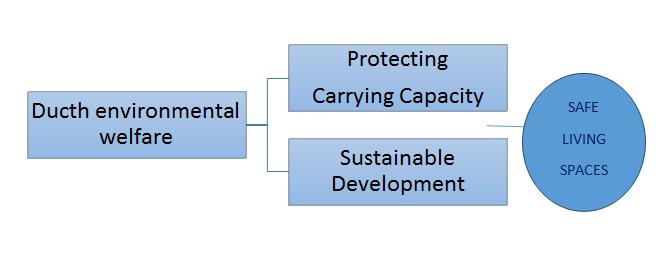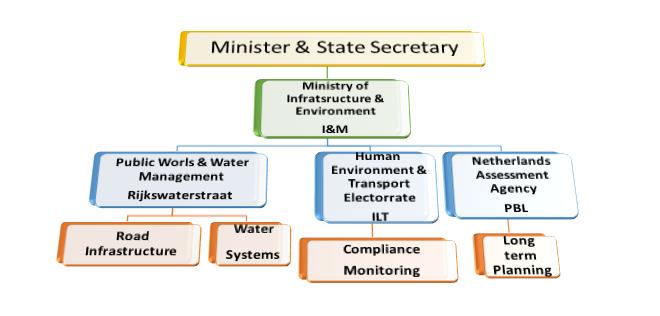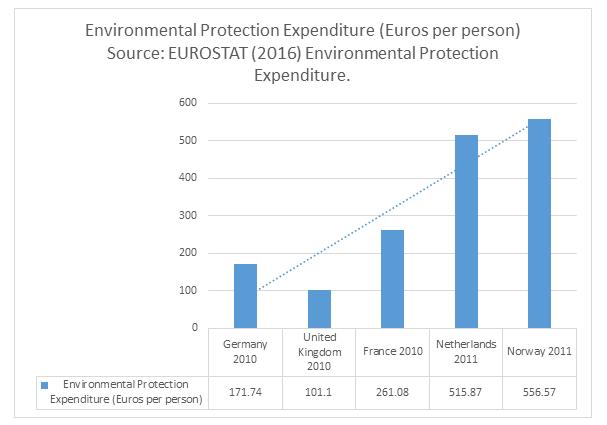The Dutch Environmental Welfare System
- Date2016-07-18 00:00
- View572
The Dutch Environmental Welfare System
Chandradath Madho and Sukyeoung Lee
Understanding Environmental Welfare
Environmental welfare generally refers to citizens’ guaranteed access to a healthy and pleasant physical environment. The Dutch policy of environmental welfare seeks to enhance the quality of life through clean, safe and sustainable living spaces (Ministry of Infrastructure and the Environment 2016). The Government of The Netherlands has proactively promoted long-term sustainable development strategies to achieve environmental welfare. This fundamentally addresses the resource-needs of the current generation without displacing the needs of the future generations, as articulated in the 1987 Brundtland Commission Report.
To appreciate the nature of environmental welfare, it is crucial to concede that Dutch sustainability is rooted in ensuring that the carrying capacity of the environment is not compromised by burdensome over-usage of natural resources. For example, in 1988 the National Institute for Public Health and Environment articulated a ‘Concern for Tomorrow’ document which explained that The Kingdom of Netherlands was precariously vulnerable to environmental disaster. The carrying capacity of The Netherlands was being compromised by high population densities, and worsened by the adverse impact of high-polluting industrial sectors like the chemical and agricultural industries. Hence, from the 1980’s, the Dutch have genuinely driven environmental welfare policies that ultimately protect the carrying capacity of the land, water and air resources of the country.
Figure 1: DUTCH ENVIRONMENTAL WELFARE FROM THE LATE 1980’S (POST-BRUNDTLAND)

The Dutch pursuit of environmental welfare is institutionalised in the ground-breaking 1989 National Environmental Policy Plan (NEPP), which was passed in the Parliament. Although this Plan was not a law, per se, it was an authoritative document that has guided environmental protection in the upcoming decades. The NEPP was introduced in the wake of the Brundtland Commission, and genuinely sought to aggressively tackle major environmental hazards that affected Dutch society. The NEPP is committed to three cornerstone principles of environmental welfare: (i) precaution (ii) standstill and (iii) the polluter-pays paradigm.
The precaution ideal states that any industrial, farming or general human activity must avoid high risk of environmental pollution or degradation. This is geared towards preserving a hazard-free living environment for Dutch households. Meanwhile, the standstill policy is a concession by the State that there are existing environmental concerns, but challenges must not be exacerbated. For example, such policy is executed by the Dutch government’s tolerance of usage of fossil fuels for transport, although there are strategies being put in place to reduce carbon-emissions in the long terms. Thirdly, the polluter pays dictum simply showcases that industries and households must accept responsibility for waste creation and a carbon footprint, by incurring fines and taxes. This quasi-coercive tactic places responsibility for environmental preservation firmly in the hands of heads of households and captains of industry.
The Scope of Environmental Welfare
|
Figure 2: SOME MAIN CATEGORIES OF ENVIRONMENTAL WELFARE
|
|
Action to mitigate against Climate Change
|
|
Eco-friendly transport fuels
|
|
Public Transport Safety
|
|
Management of Water-Ways
|
|
Clean Water Supply
|
|
Spatial planning across Holland
|
|
Regulations against Hazardous Substances
|
The wide array of environmental welfare strategies stated in Figure 2 above, typify how Dutch citizens have not become complacent in preserving their living spaces. Perhaps the most significant of these strategies relates to countering climate change phenomena. As global temperatures and sea levels rise, there is an obvious obligation by the Dutch nation to reduce carbon dioxide emissions. This is especially pertinent to a country that comprises 30% of land space currently below the sea level, therefore being vulnerable to floods. The Netherlands is therefore actively pursuing the dictates of the 1997 Kyoto Protocol. It successfully reduced emissions from 1997 to 2012 in the first phase of the international convention, and is now fulfilling its obligation to the international community wholeheartedly from 2012 to 2020. Hence the Dutch are seeking to implement a 20% improvement in energy fuel efficiency.
Furthermore, The Netherlands is committing to EU-driven targets of a 40% reduction in greenhouse gases by 2030 compared to the 1990 level of emissions. The Dutch are also committed to the recent Paris COP 21 conventions on reduced carbon emissions which take effect in 2020.
Another useful strategy to enhance environmental welfare is linked to a clear policy towards the increased usage of more eco-friendly transport fuels. A target has been set by the Dutch government that by 2020, 10% of all its transport fuel must be based on renewable sources. As an incentive for car users to reduce carbon emissions owners of energy efficient cars actually pay less road taxes. The Dutch government is keen to convert organic waste and old plant materials into bio-fuel in the upcoming years. It is providing incentives to companies to engage in this industry.
A third major strategy of the Dutch State to ensure environmental welfare is a concerted effort to derive efficient water-way management. Because the Netherlands is a low-lying flood-prone country, there is tremendous need to secure freshwater areas and to avoid flooding. Hence the Delta Programme is a specific activity all geared towards reducing the probability of future flooding. The Delta programme operates in accordance with the stipulations of the 2012 Delta Act, which enables this intervention to derive a budgetary allocation from the national budget at the start of every fiscal year.
By capturing and channelling waterways in an efficient manner, the end result goes beyond the avoidance of flooding, so that a repeat of the tragic 1953 National Flood does not occur. Instead, efficient water-capture on the surface and subterranean level, must be treated and converted to safe drinking water. In this regard, the Dutch policy on clean water purification and distribution draws heavily upon the European Drinking Water Directive. This stipulation leads the action of private water companies that must restrict the presence the bacteria or any foreign substances in the water to an absolute minimum. Undoubtedly, the success of a clean and reliable water supply guards against the incidence of water-borne diseases like cholera, and diarrhoea.
Apart from environmental welfare involving interventions to yield preserved air quality as well as water-capture and treatment, the Dutch State has certainly ensured that all forms of land usage are well regulated. The Dutch State concedes that land usage are in the following rigid categories: human settlement, farming, industry and commerce. By classifying settlement patterns, there is an ease in regulation and monitoring of land usage. This is extremely important in a nation that ensures a high population density. The framework for monitoring land usage is not only based on European Union Directives but entrenched in the legislation like the: Spatial Planning Act, Water Act and Historic Building Act.
The aforementioned environmental welfare practices are not exhaustive. However, they provide a synopsis of the main State strategies to promote a clean environment in terms of: air quality, water access and usage and land usage. Interestingly, there is a centralised State apparatus that deals with protection of the environment on a daily basis. The Ministry of Environment and Infrastructure (I&M) aims to guarantee a safe standard of living for all people domiciled in The Netherlands.
Operations of the Ministry of Environment and Infrastructure (I&M)
I&M is entrusted with the creation and supervision of an efficient network of: roads, railways, airports, waterways, water-management and air quality. The Minister of I&M is politically appointed, and belongs to a Cabinet of Ministers. As shown in Figure 3, the Minister is given control of various Departments. Meanwhile, the State Secretary functions as a Senior Expert in the organisation. The State Secretary is placed in power because of his / her adept human capital and is supposed to provide objective guidance and supervision to various departments.
Interestingly, the I&M deals with welfare on three different levels: policy, implementation and inspection. The core agencies that are responsible for the majority of undertakings are: (i) Public Work and Water Management / Rijkswaterstraat (RWS) (ii) Human Environment and Transport Electorate (ILT) and (iii) The Netherlands Environmental Agency (PBL). According to Figure 3, functional interdependence of the three main subsidiary branches can be revealed in the fact that Rijkswaterstraat is more responsible for water systems and rood upkeep on a daily basis. However the ILT is entrusted with monitoring of environmental regulations, whilst the PBL is empowered with the planning functions.
Figure 3: Central State / Governmental Hierarchy of institutions for environmental welfare

Budgetary Allocation
The Dutch attention to environmental welfare is meticulous and more than the other relatively developed countries within the EU and the OECD. As shown in Figure 4 below, the Dutch expenditure per citizen, in terms of enhancing environmental welfare is much higher than the EU average. Only Norway has a higher allocation for environmental welfare, which can be possibly explained by Norway’s very high GDP per capita.

According to the Ministry of Infrastructure and Environment (2015), in the fiscal year of 2015 to 2016, the budgetary allocation of 9 billion euros was disbursed for environmental welfare. The greatest sub-allocation of 5.8 billion euros was given to The Infrastructure Fund for the upkeep and maintenance of roads, bridges and waterways. The Management and Maintenance fund of 2.6 billion euros was provided for meeting daily operations of the I &M. Finally 1.2 billion euros was given to the Delta Fund which is extremely important for the overall safety of the Netherlands. After all, this fund guards against flooding possibilities. Although the State’s environmental welfare expenditure to GDP ratio is not as high as it is for the education and health sectors, it is just under 2%, which is relatively higher than EU nations (OECD 2015).
Concluding Thoughts: Dutch Citizens’ performance of environmental welfare
OECD (2015) notes that Dutch households and industries have jointly cooperated to tremendously reduce: greenhouse gas emissions, all major pollutants and waste generation. Since 2000, the Dutch success story in waste management has led to the virtual elimination of landfill sites. Citizens have nurtured a culture of sanctions to reinforce environmental well-being, exemplified by the high tax contributions for environmental issues. There has also been a high compliance to the 13 existing Acts relating to environmental issues (OECD 2015). It can be surmised that the proposed umbrella legislation for environmental welfare called the Environmental and Planning Act will be a legislative reality in 2018.
In the future, the Dutch public will be called upon to act as exemplary EU citizens to set the standards of improved environmental welfare in Europe. By utilising collective will that supports State and EU initiatives, sustainable development possibilities may become tangible realities.
References
Eurostat (2016) Environmental Protection Expenditure in Euros per person per year. Accessed 28 June 2016 <http://appsso.eurostat.ec.europa.eu/nui/show.do?dataset=env_ac_exp2&lang=en>
Ministry of Infrastructure and the Environment (2015) I&M Expenditure. Release of Information made on September 17 2015. Accessed on 26 June 2016 <https://www.government.nl/latest/news/2015/09/17/i-m-2016-budget-innovative-solutions-for-a-sustainable-and-accessible-country.>
Ministry of Infrastructure and Environment (2016) Accessed on 20 June 2016 < https://www.government.nl/ministries/ministry-of-infrastructure-and-the-environment>.
OECD (2015) OECD Environmental Performance Reviews: The Netherlands 2015, OECD Publishing. Accessed 28 June 2016 <http://www.oecd.org/netherlands/oecd-environmental-performance-reviews-the-netherlands-2015-9789264240056-en.htm>
* Introduced here is an article written by one of KEI's environment correspondents. KEI invites students studying abroad and researchers working for foreign research institutes to send articles on various global environmental issues.
- PrevManaging Construction Noise Pollution in The Netherlands.
- NextThe Dutch Policy in Reducing VOC Emissions
